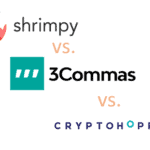There are two types of variables measuring scales: nominal and ordinal. They can be handy for conducting surveys and analyzing the data. Nominal scales categorize, whereas ordinal surveys arrange data in a certain order. One scale may be better suited depending on the data you’re studying and your research goals. This article explores Nominal vs ordinal data.
Table of Contents
What is Ordinal Data?
Ordinal data, a type of qualitative data, organizes variables into descriptive categories. What sets it apart is the fact that the categories it uses are ordered on a hierarchical scale, such as high to low. Despite being the second most complex type of measurement, after nominal data, it is relatively simple to understand.
Ordinal data, for example, is used to categorize items based on a meaningful hierarchy or order. These categories allow us to compare and rank student achievements, positions, or performance, even when the intervals between them are unequal. Ordinal data helps comprehend ordered options or preferences.

Nominal Vs Ordinal Data: Characteristics of Ordinal data
- Ordinal data is classified as non-numeric and categorical, yet numerical values can still be used as labels.
- Ordinal data are always organized in a hierarchy (hence the word ‘ordinal’).
- Ordinal data can be ranked, but the values are not uniformly distributed.
- Ordinal data allows you to calculate the frequency distribution, mode, median, and range of values.
Nominal Vs Ordinal Data: Measurement of Ordinal data
The variables on the ordinal scale are related to numbers, and we occasionally assign quantitative values. Ordinal data cannot be analyzed using arithmetic methods; nevertheless, mode, median, and percentiles can be used to measure it. Table charts and mosaic plots are also effective for interpreting ordinal data. Ordinal data can also be measured using non-parametric approaches.
- Wilcoxon signed rank Test
- Friedman 2-way ANOVA
- Wilcoxon rank sum. Test
- Kruskal-Wallis One-way Test
Nominal Vs Ordinal Data: Collection of Ordinal Data
Variables and alternatives in an ordinal scale must be ranked and organized. Surveys with scales that can categorize options into ranks, such as the Likert scale, rating scale, and others, are more suited to collecting ordinal data.
Nominal Vs Ordinal Data: Uses of Ordinal data
The ordinal scale, on the other hand, is used to solicit feedback, evaluations, or ratings following a customer’s experience. Ordinal Scales include surveys that address questions about satisfaction, frequency, importance, chance of recommendation, and so on.
You may have received an email inquiring about your online shopping or meal ordering experience.
Nominal Vs Ordinal Data: Examples
- School Grades: Grades A, B, and C are ordinal values ranked by achievement, but the intervals between them differ.
- Education Level: Levels such as high school, bachelor’s, and master’s are ordinal data arranged by education, although the gaps between them vary.
- Seniority Level: Job levels such as entry, mid, and senior are ordinal statistics that show hierarchy. However, the gap varies by job and industry.

What is Nominal Data?
Categorical data, also identified as nominal data, is used in many domains, including research, statistics, and data analysis. It is made up of categories or labels that help to classify and organize data. The key property of categorical data is that it lacks any intrinsic order or ranking among its categories. Instead, these categories are unique, independent, and mutually exclusive.
For example, nominal data categorizes information without regard for natural order or ranking. Names or terms represent these classifications or categories with no inherent order or ranking. Nominal data helps researchers and analysts categorize and organize information based on specific features or characteristics without specifying any numerical relationship.

Nominal Vs Ordinal Data: Characteristics of Nominal data
- Nominal data consists of fully different and unique categories.
- Data in the nominal category is characterized by descriptive labels rather than any numerical or quantitative value.
- Nominal data cannot be rated or organized hierarchically because no category is superior or inferior to another.
Nominal Vs Ordinal Data: Measurement of Nominal data
The nominal scale’s variables do not have a quantitative value. The variables are attributes that do not need to be arranged in any particular sequence or hierarchy.
Since the linked numbers are solely utilized for data collecting, they are organized into groups. Data on the nominal scale are calculated as a percentage or mode of distribution. Nominal data can also be represented graphically using pie charts and bar charts.
Four different tests can be employed to assess nominal scale data. They are:
- The McNemar Test
- Cochran’s Q-Test
- Fisher’s Exact Test.
- Chi-Square Test
Nominal Vs Ordinal Data: Collection of Nominal Data
To obtain nominal data, conduct a survey containing open-ended, closed-ended, and multiple-choice questions. Data on the nominal scale are descriptive. Responses describe attributes or qualities.
Open-ended and multiple-choice questions allow respondents to express their opinions without being restricted to a single option.
Nominal Vs Ordinal Data: Uses of Nominal data
- A nominal scale might be extremely useful if you need to gather information about all of your company’s employees.
- A nominal scale is ideal for collecting information about people, objects, or places. For example, a store can gather personal information from its customers, such as their name, phone number, and email address, to use later for marketing or other purposes.
- You may have supplied such information in restaurants and malls. Such data represents a notional scale.
Nominal Vs Ordinal Data: Examples
- Eye color categories such as “blue” or “green” indicate nominal data. Each group is separate, with no hierarchy or ranking.
- Brand names for smartphones, such as “iPhone” or “Samsung,” are nominal. There is no hierarchy of brands.
- Transportation modes such as “car” and “bicycle” are notional data. They are discrete categories that lack inherent order.

Conclusion
The first step toward appropriately identifying nominal and ordinal data is understanding their definitions. You must define their similarities and distinctions to ensure a clear analysis. This knowledge is critical because it helps a researcher identify the type of data that has to be collected.
Frequently Asked Questions
Is one data type better than another?
Neither is necessarily superior. The decision is based on the information you want to capture. Ordinal data is more informative than nominal data since it indicates an order, but it may need to be more detailed if the difference between ranks is significant.
Can I involve nominal and ordinal data in the same dataset?
Yes, absolutely. A dataset can contain a combination of nominal and ordinal variables. Analyze each variable according to its unique properties.
Can I transform nominal to ordinal data?
Numerical values could be assigned to nominal categories for calculation. However, use caution. Assigning numerical values to nominal data does not imply a true order or meaningful distinction between the values. Analyze the data in its original form (nominal) and avoid misinterpreting the assigned numbers.










